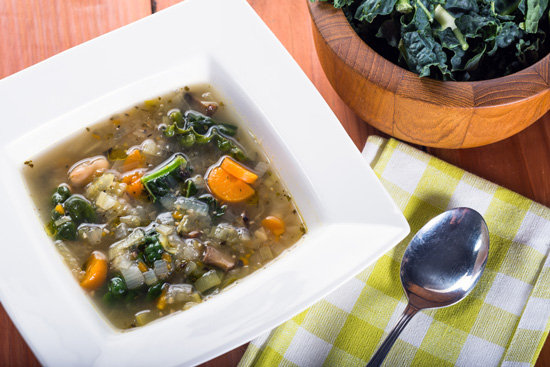Insider’s Viewpoint: Shop & Save on Produce


Two of the top New Year’s resolutions involve some type of goal related to achieving better health and saving money. This year you can do both with these money saving tips and waste-less tricks that will also help you eat right!
9 Ways to Save Money on Fruits & Veggies
- Eat in season. In-season produce generally reaches the grocery store or market quickly, especially when grown within the local area. This reduced transportation time generally results in the items being sold at a reasonable cost. Make the most of these lower prices by filling your basket with “in season” or local fruit and vegetables that can be eaten fresh or canned and frozen for later use.
- Fill up on year-round picks. Items like bananas, apples, carrots, celery and onions are typically abundant throughout the year and therefore tend to stay at a more consistent price.
- Check for sales and mark downs. Most sales vary weekly enabling you to incorporate different fruits and vegetables into your weekly meal plans. Tip – If you shop earlier in the day, you will tend to find a better selection of marked down items.
- Reach for bulk. Consider buying in bulk for items that you use a lot of throughout the week. If there is a great sale, stock up and freeze it for later use. In general the higher the water content, the less likely it will freeze well. Freeze fresh fruit as is, but to freeze veggies, lightly precook, lay on a baking sheet to freeze (and prevent sticking) and once frozen, place in a freezer baggie or container.
- Buy frozen, canned, packaged or dried. These types of fruits and veggies are convenient, affordable, and a very nutritious choice. Since they also have a longer shelf-life, you will have more time to eat them up. Use frozen produce in smoothies and soups. Look for canned varieties with no added salt (or rinse for 30 seconds under water before using to reduce the sodium) for sauces and side dishes.
- Learn proper storage. Learn where to place produce items to retain quality and delay spoiling. Some require refrigeration, others store best at room temperature and some fruits and veggies should be kept separate from others such as bananas and tomatoes.
- Eat fresh first and frozen last. This requires some prior meal planning, but the goal is to prevent waste by using your fresh produce at the beginning of the week and frozen, canned and packaged options towards the end.
- Use all parts. The concept of “root to stem” saves on food waste. Make use of all edible parts instead of mindlessly throwing away. Chop broccoli and cauliflower stems into matchsticks, leave the skin on root veggies, and mix cooked carrot or beet tops into recipes.
- Make a soup. A great way to make your produce stretch throughout the week is to bulk up the volume with economical protein and grains like beans, lentils and brown rice. You can also add extra scraps of celery tops and onion bottoms to the soup for more flavor.
Recipe
Tuscan Kale and Bean Soup
Serves: 6
Ready in: 35 minutes
Ingredients
- 2 bunches of fresh kale
- 2 tablespoons olive oil
- 1 medium onion, thinly sliced
- 1 medium carrot, thinly sliced
- 1 celery stalk including leaves, sliced
- 1 garlic clove, minced
- 3 cups reduced-sodium chicken broth
- 1 can (14.5 oz.) diced tomatoes, undrained
- 1 can (19 oz.) cannellini beans, rinsed and drained
- 1 teaspoon dried oregano or marjoram
- ¼ cup shredded parmesan (optional)
Steps
- Cut stems from kale; slice stems and reserve. Coarsely chop kale leaves; set aside.
- In a large Dutch oven or heavy bottom pot, heat oil over medium heat. Add kale stems, onion, carrot, celery and garlic; cook and stir 3 minutes. Stir in broth, tomatoes, beans and oregano; bring to boiling. Reduce heat and simmer 10 minutes.
- Stir in kale leaves. Simmer 5–10 minutes or until kale wilts. Ladle soup into soup bowls, sprinkle with Parmesan (if desired), and serve.
Nutrition information: 194 calories, 5.9g fat, 1.3g saturated fat, 3.5g sugar, 453mg sodium, 20g carbohydrate, 6g fiber, 11g protein.
Recipe Source: StopAndShop.com
Julie Hersey, MS, RD, LDN
Nutritionist
Stop & Shop New England
Insider’s Viewpoint Archive
Fruit & Vegetable Recipes
Video Center: Selection, Storage, and Preparation of Fruits & Vegetables.


